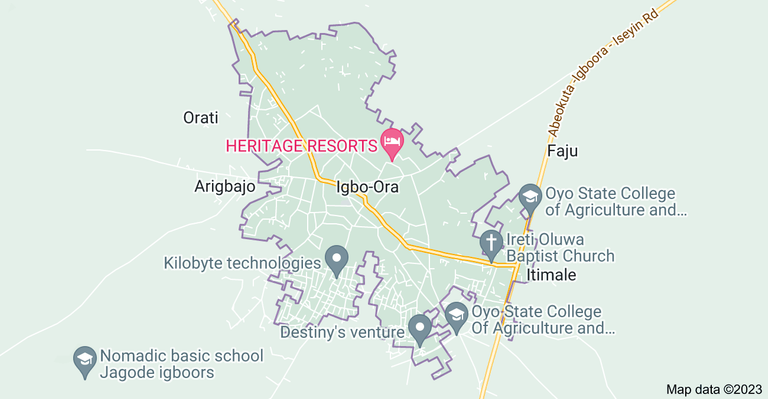Welcome to Twin city
Many people love the sight of well-groomed twins or triplets, especially if they happen to be identical. Even though bringing them up from neonates to toddlers is a herculean task, they become the cynosure of all eyes at some points, and merely sighting them arouses the desire for twins in many individuals. My wife has been singing about her desire for a twin since we got married. If only the decision is with us.
Or, is it?
To the best of my knowledge, there are no sure ways of producing twins. I know there are drugs and fertility treatment procedures that are capable of stimulating the female ovaries to release more than one egg and thus increase the chances of having twins. Even then, producing a twin is not a guarantee. Drugs like clomiphene, popularly sold as Clomid to treat infertility in women stimulates the ovary to produce multiple eggs and increase the chances of having multiple births, often beyond just twins.
How are twins formed?
There are two types of twins in nature:
- Monozygotic or identical twins
- Dizygotic, non-identical, or fraternal twins
Identical twins are formed from a single fertilized egg. The resulting zygote divides into two and each gets implanted into the uterus and then follow the same developmental process as an embryo. In some cases, the zygote divides into 3, resulting in an identical triplet. Identical twins or triplets are also as a rule of thumb, of the same sex.
Fraternal twins are formed from two different eggs. Each egg also gets fertilized by different sperm. Meiosis or gametogenesis results in gametes that are not just genetically more diverse than their parents, but also genetically unique from one another. Thus, fraternal twins are usually non-identical. One can be short while the other will be tall, one can be light-skinned, the other will be dark-skinned, and so on.
More than two different eggs can also get fertilized by different sperm to result in multiple births beyond twins. They can be of the same or different sex, unlike monozygotic births.
Behold! The city of twins
Somewhere in the Southwestern part of Nigeria lies a city that I have decided to nomenclature the city of twins. Igbo-ora is the city headquarter of one of the popular local governments in Oyo state, Nigeria. Geographically, it is located to the North of Lagos (since everyone knows Lagos) and about 110 km distance by road.
Why is it called a city of twins?
Igbo-ora is a city with arguably the highest occurrence of twin births in the whole world. I am yet to actually give the town a visit, but according to those that have been privileged to visit, you may think you are seeing double of every person in the village. According to particular research findings, the city has about 45 twins out of every 1000 births. In actual fact, nearly every family in the city has a twin or multiple births.

Trust science to have been finding the factors that could be responsible for this high rate of twins in the city. Generally, the various factors that have been touted to have some level of correlation with multiple births include:
- Genetic factor or family history
- Certain drugs or fertility treatment drugs as I pointed out earlier
- Age. Multiple births tend to be more in women above 30. This is assuming other factors are not considered.
- Body weights and heights. Multiple births are more common in women with more than average body weights and heights.
- Race. Black race has a higher frequency of twin births than other races
- Certain diets
However, in the case of Igbo-ora, no particular factor has been identified for the significantly higher rate of twins. The locals have their own hypotheses though:
- Some said it is due to their regular consumption of ilasa. Ilasa soup is a soup made from the young leaves of okro plants. The young leaves are plucked, rinsed, chopped into smaller pieces, boiled with sodium carbonate, and then blended to form a fine drawing paste.
- Some said it is due to their regular consumption of amala.
- Some said it is due to their consumption of yam.
All these hypotheses remain largely unproven, particularly when it is considered that neighboring cities and villages consume similar foods but do not have the same twinning rate. One interesting hypothesis that stemmed from a scientific research points to environmental factors creating epigenetic modification that influence the high rate of twins in the village.
Only further research can prove that.
In the meantime, if anyone wishes to have twins badly, they may consider relocating to Igbo-ora, Oyo state, Nigeria. If they end up giving birth to a twin in future, perhaps the epigenetic modification hypothesis would be taken more seriously.
And, guess what? The cost of living is quite cheap, environmental pollution is minimal, and you are confined to consuming fresh agricultural produce every day.
Resources
https://www.verywellfamily.com/what-are-my-chances-of-having-twins-1960180
https://www.bbc.com/news/av/world-africa-45979768
https://www.npr.org/2022/10/14/1129008458/this-nigerian-city-has-a-high-birth-rate-of-twins-and-no-one-is-sure-why
https://www.sciencedaily.com/releases/2018/10/181009102542.htm
https://www.medicalnewstoday.com/articles/324455#how-to-increase-the-chance
Well. This is some information. I did not have any idea that any such place existed. Thank you for this article.
You are welcome @dera
Thanks for your contribution to the STEMsocial community. Feel free to join us on discord to get to know the rest of us!
Please consider delegating to the @stemsocial account (85% of the curation rewards are returned).
You may also include @stemsocial as a beneficiary of the rewards of this post to get a stronger support.
Congratulations @gentleshaid!
You raised your level and are now a Minnow!
Check out our last posts:
Support the HiveBuzz project. Vote for our proposal!